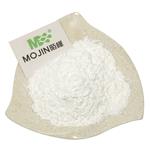Gabapentin lactam (CAS 64744-50-9) reduces protein aggregates and improves motor performance in a transgenic mouse model of Huntington’s disease.1 Displays neurotrophic effects, enhancing the formation of dendritic filopodia and inducing a network of F-actin-containing neurites in cultured hippocampal neurons.2 Promotes the survival of cultured central nervous system neurons possibly by opening mitochondrial KATP channels.3 Displays neuroprotective effects in a rat model of acute retinal ischemia.4
Gabapentin-lactam is White Solid
Gabapentin-lactam reduces protein aggregates and improves motor performance in a transgenic mouse model of Huntington’s disease. It opens mitochondrial ATP-dependent potassium channels.
Gabapentin Lactam reduces protein aggregates and improves motor performance in a transgenic mouse model of Huntington disease. It opens mitochondrial ATP-dependent potassium channels
These Secondary Standards are qualified as Certified Reference Materials. These are suitable for use in several analytical applications including but not limited to pharma release testing, pharma method development for qualitative and quantitative analyses, food and beverage quality control testing, and other calibration requirements.
ChEBI: 2-Azaspiro[4.5]decan-3-one is an azaspiro compound.
Pharmaceutical secondary standards for application in quality control, provide pharma laboratories and manufacturers with a convenient and cost-effective alternative to the preparation of in-house working standards.
1) Zucker et al. (2004), Gabapentin-lactam, but not gabapentin, reduces protein aggregates and improves motor performance in transgenic mouse model of huntington’s disease; Nauyn Schmiedebergs Arch. Pharmacol., 370 131
2) Henle et al. (2006), Gabapentin-lactam induces dendritic filopodia and motility in cultured hippocampal neurons; J. Pharmacol. Exp. Ther., 319 181
3) Pielen et al. (2004), Retinal ganglion cell survival is enhanced by gabapentin-lactam in vitro: evidence for involvement of mitochondrial KATP channels; Graefes Arch. Clin. Exp. Ophthalmol., 242 240
4) Lagreze et al. (2001), The neuroprotective properties of gabapentin-lactam; Graefes Arch. Clin. Exp. Ophthalmol., 239 845



